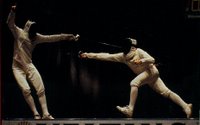Mastery for Learning
 Bloom, in his article “Learning for Mastery”, commented on how the education system creates a self-fulfilling prophecy through the grading process. According to him, the set of expectations that only a third will learn adequately, a third will just get by while a third will fail; is indeed a “destructive aspect of the present educational system”. The system destroys the students’ egos, reduces motivation for learning and subjects them to humiliating and frustrating conditions year after year. Whilst it is true that most students can master what we teach them, we must continuously find the means that will enable our students to master the subject they learn.
Bloom, in his article “Learning for Mastery”, commented on how the education system creates a self-fulfilling prophecy through the grading process. According to him, the set of expectations that only a third will learn adequately, a third will just get by while a third will fail; is indeed a “destructive aspect of the present educational system”. The system destroys the students’ egos, reduces motivation for learning and subjects them to humiliating and frustrating conditions year after year. Whilst it is true that most students can master what we teach them, we must continuously find the means that will enable our students to master the subject they learn.Most teachers use the bell curve grading that assigns grades to students based on their relative performance in comparison to their classmates' performance. Such classification is deemed as a distribution most appropriate to chance and random activity. They do not reflect students' true learning capabilities and mastery of knowledge. Education should be a purposeful activity and as such, we need to supplement regular classroom instruction by using alternative instructional methods. Most educators know that students learn more when they are creating their own learning opportunity. The “tell me and I’ll forget; show me and I may remember; involve me and I’ll understand” concept is now being acknowledged and implemented in classes worldwide. More and more students are immersed in hands-on, technology-integrated projects that emphasizes educational opportunities that are student-centered, collaborative and inter-disciplinary (Bradford, 2005).
True to Kozma’s argument that media can indeed influence learning, students apply and integrate the content of different subject areas in the production process, instead of in an artificial or isolated setting. Many of the abilities that students acquire through technology-integrated project based learning are 21st century interpersonal skills. Grades should never be made the ultimate measurement for knowledge mastery. Instead, skills such as teamwork, problem solving skills, effective oral and written communications which are high desired by business communities, should be encouraged. Therefore, teachers need to formulate alternative forms of assessments that recognize students’ varied learning abilities; preferably those that can also track their improvements in the subject area.
As we go about setting alternative assessments based on Bloom’s emphasis on mastery for learning, we must not forget about the Pygmalion effect (or Rosenthal effect). The Pygmalion effect refers to situations in which students perform better than other students simply because they are expected to do so. In a study done by Robert Rosenthal and Lenore Jacobson (1968/1992), they showed that if teachers were led to expect enhanced performance from some children, then the children did indeed show that enhancement. In some cases, such improvement was about twice that was shown by other children in the same class. Whilst some may argue that it is not good to give students false illusions, I truly believe that positive reinforcements are beneficial to learning. Just as adults who need constant reminders that they performing well, students too need the encouragement and positive taps on the shoulders to rekindle their interest and zest for lifelong learning.
References:
Bloom, B.S. (1968, May). Leaning for mastery. Evaluation Comment, 1(2), 1-12.
Bradford, M. (2005, Jan). Motivating Students Through Project-Based Service Learning. T.H.E. Journal, 32(6), 29.
Kozma, R. (1994). Will media influence learning? Reframing the debate. Educational Technology, Research and Development, 42(2), 7-19.
Rosenthal, R. (2002). The Pygmalion effect and its mediating mechanisms. In J. Aronson (Ed.), Improving academic achievement: Impact of psychological factors on education. San Diego, CA: Academic Press.


0 Comments:
Post a Comment
<< Home